
The Episcopal School of Dallas promotes race-based affinity groups for students
Incidents
The Episcopal School of Dallas has a page online promoting “Diversity, Equity, and Inclusion.” The page states that “the Board, in partnership with the school’s executive leadership, has worked to reaffirm our commitment to diversity, equity, and inclusion at The Episcopal School of Dallas.” The page also promotes “affinity groups” and “alliance groups.” Affinity groups are groups that segregate people based on their characteristics, such as race and ethnicity. Despite labeling itself a Christian school, the school’s Board has a diversity statement that specifically mentions “gender” and “sexual orientation”:
The ESD community is committed to creating, maintaining, and nurturing a diverse and inclusive environment as it prepares young women and men for lives of intellectual discovery, integrity, and purpose. We believe that diversity in our school community enhances the quality of the education that ESD provides and is essential to the development of well‐rounded people in the twenty‐first century. The Episcopal School of Dallas values diversity in all its forms, including but not limited to ethnicity, religion, gender, sexual orientation, and socioeconomic background.
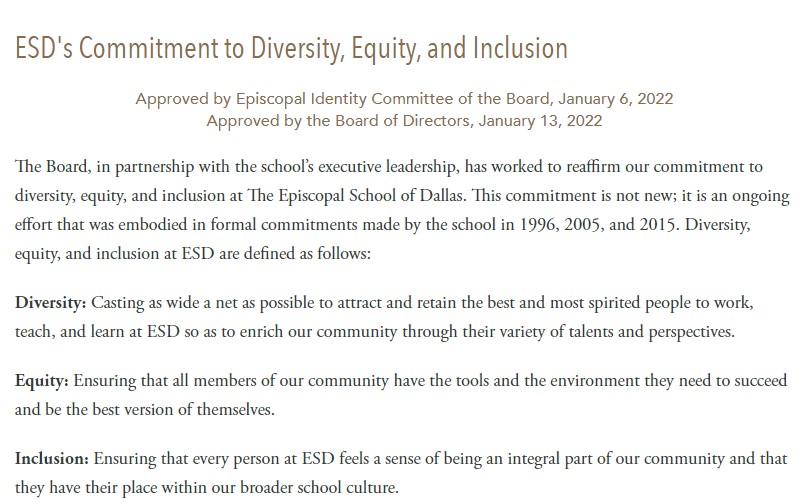
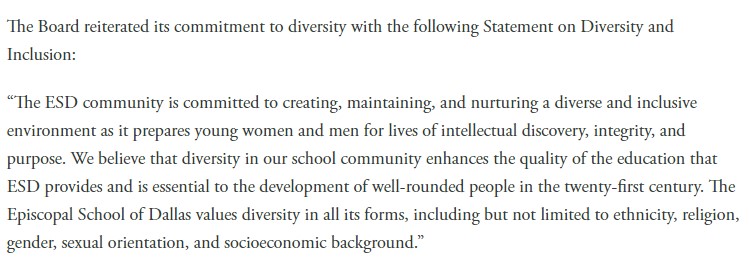
The school’s list of “affinity groups” includes a “Black Student Union.” The school states that members of this affinity group “charge the organization to act as a unified intermediary for the promotion of creative Black Student Union enterprises, and to aid in the awareness and significance of African Americans as part of their experience at The Episcopal School of Dallas.”
An “alliance group” listed for the school is “Spectrum.” The school explains that this alliance group “exists to create a safe space for LGBTQ+ members of the ESD community and their allies.” Another alliance group is titled “Latinos Unidos.” The school explains that the group is an “alliance group with the goal of bringing awareness to and education about Hispanic and Latinx culture.”
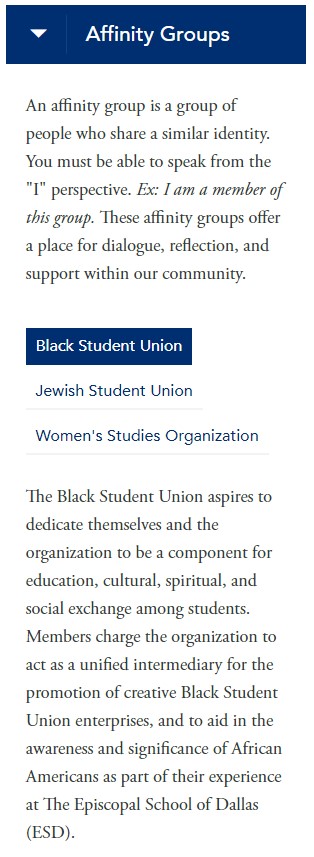

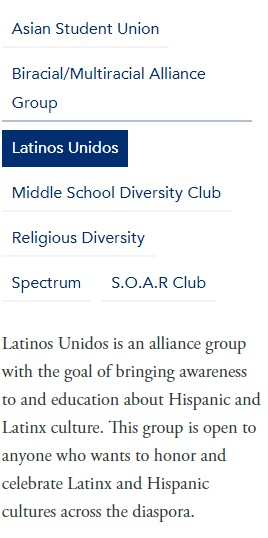
The school also promotes professional development training for staff in an effort to build “a safe and inclusive space for all.” The school continues to explain: “To this end, all faculty and staff participate in regular diversity focused professional developments led by our Director of Diversity, Equity, and Inclusion on topics such as cultural sensitivity, religious diversity, race and the impact of racism, and more.”
The school further explains that students join staff and “often travel with Diversity and Inclusion Coordinators to several conferences and events throughout the year.” These events include the “Student Diversity Conference” and “People of Color Conference.”
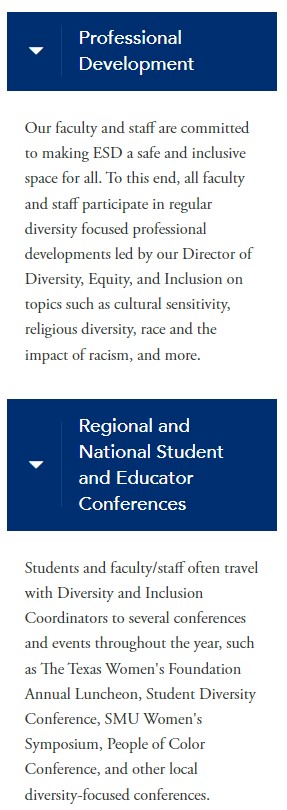
The school also appears to be involved in the “No Place for Hate” project. The equity page states that “Middle School advisories worked together to highlight ways in which ESD can become No Place for Hate.” The “No Place for Hate” project is operated by the notoriously political organization Anti-Defamation League (ADL). In a document for the “No Place for Hate” project, the ADL states that “although learning how to demonstrate kindness is an important part of a child’s psychological and social development, ADL highly encourages schools to move beyond kindness to social justice.” One section of the document is titled “Let’s Get It Right: Using Correct Pronouns and Names.” In this section, the document encourages teachers to use the preferred pronouns of students:
From an early age, many were taught that pronouns should follow specific rules along the gender binary: ‘she, her and hers’ for girls and women and ‘he, him and his’ for boys and men. However, as our society has progressed in understanding gender identity, our language must also be updated. It should be accurate and convey understanding and respect for all people, especially for those who are transgender, gender non-conforming and non-binary.
The document then encourages teachers to implement “LGBTQ” topics into classroom discussions:
Using the lesson below, lead a discussion about the ways in which LGBTQ people, events and issues have been less visible or made invisible in mainstream accounts of history. Explore the impact of invisibility on people and how different groups have been historically marginalized in society. Then, engage students in a discussion about people who may feel invisible in their school. Be sure to focus on general identity characteristics (e.g., sexual orientation, immigration status, gender identity, etc.) rather than specific individuals. Based on this discussion, ask students to sign up to be interviewed if they feel like an aspect of their identity needs more visibility.
The “No Place for Hate” document also features a “Pyramid of Hate.” The ADL uses the document to explain that “while every biased attitude or act does not lead to genocide, each genocide has been built on the acceptance of attitudes and actions described at the lower levels of the Pyramid.” The pyramid intends to show that actions such as using “non-inclusive language” and committing “microaggressions” will possibly lead to “the act or intent to deliberately and systematically annihilate an entire people.”
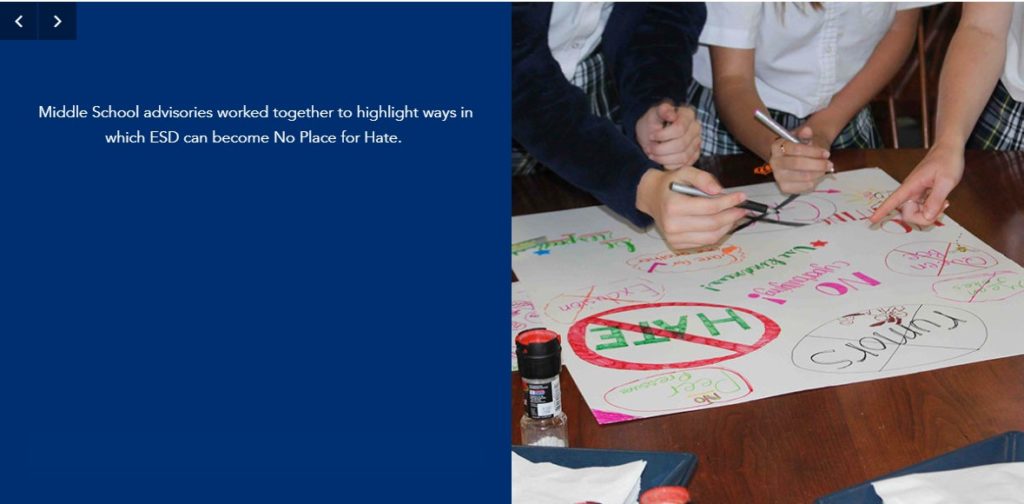
The “Upper School History Subject Overview” for “History and Social Studies” features a class called “Race in America” for students. The page for the class states that students will “focus on the cultural, economic, and social ramifications of race as a constant factor in American life.” Course materials will include discussing “current events.”
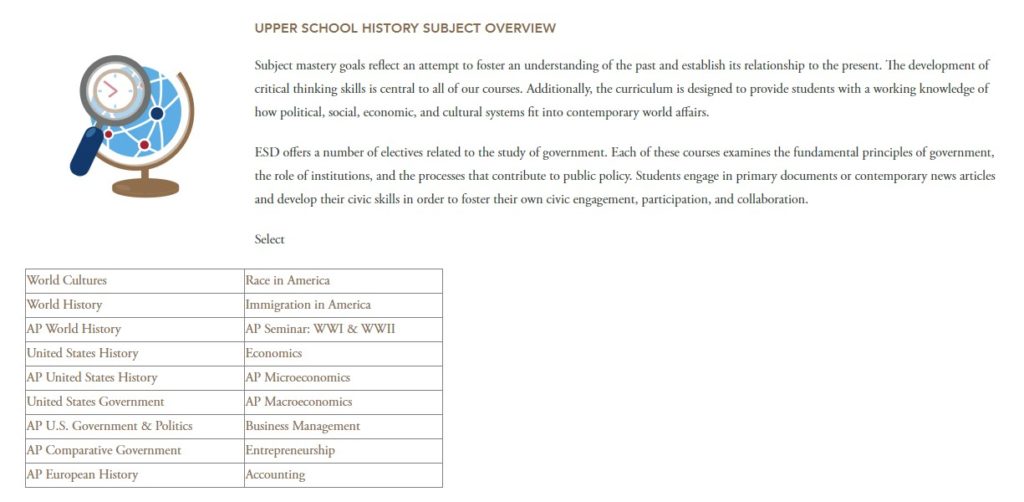

The tuition rate for the 2022-2023 school year is over $25,000 for “Preschool and Lower (Elementary) School” students in the school. The tuition rate for each grade in “Middle and Upper (High) School” is around $35,000 for the 2022-2023 school year.
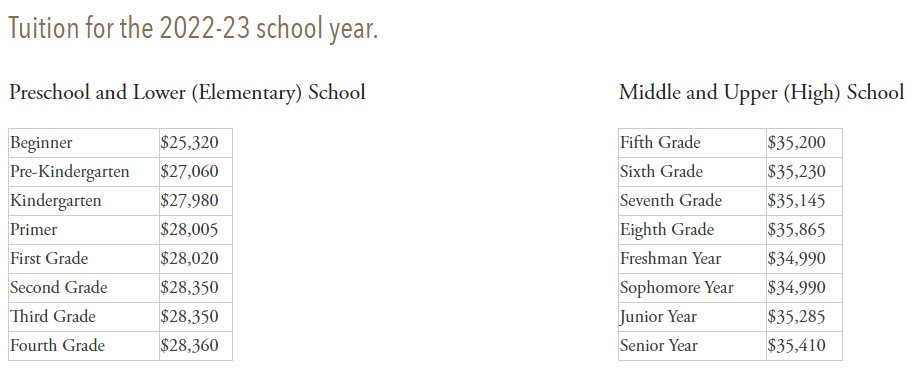
Stay Informed
